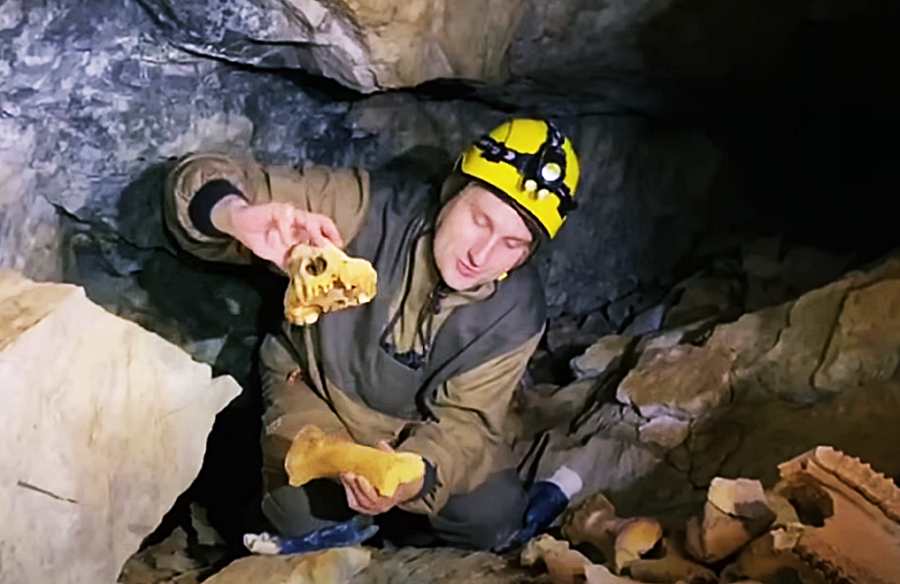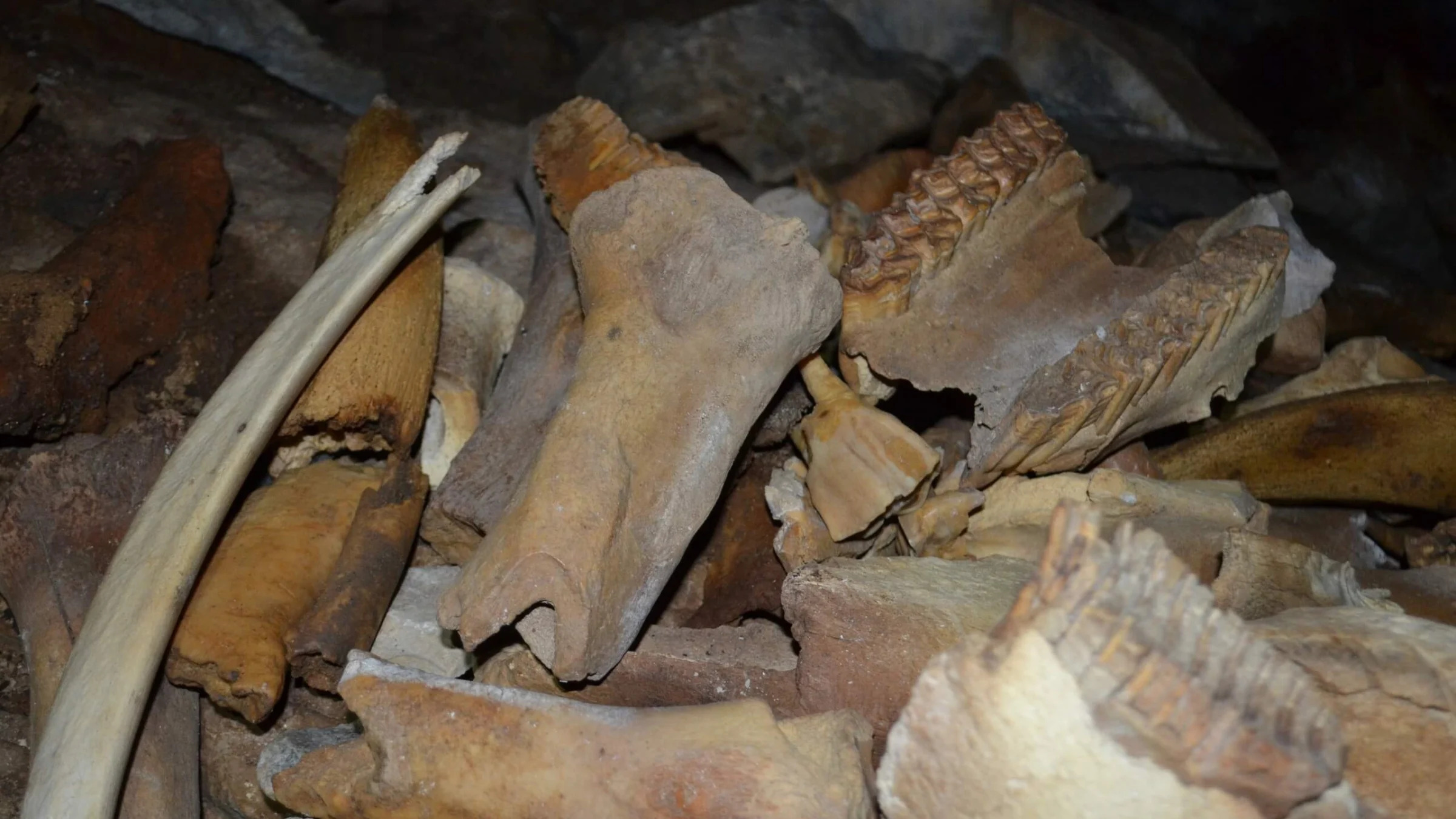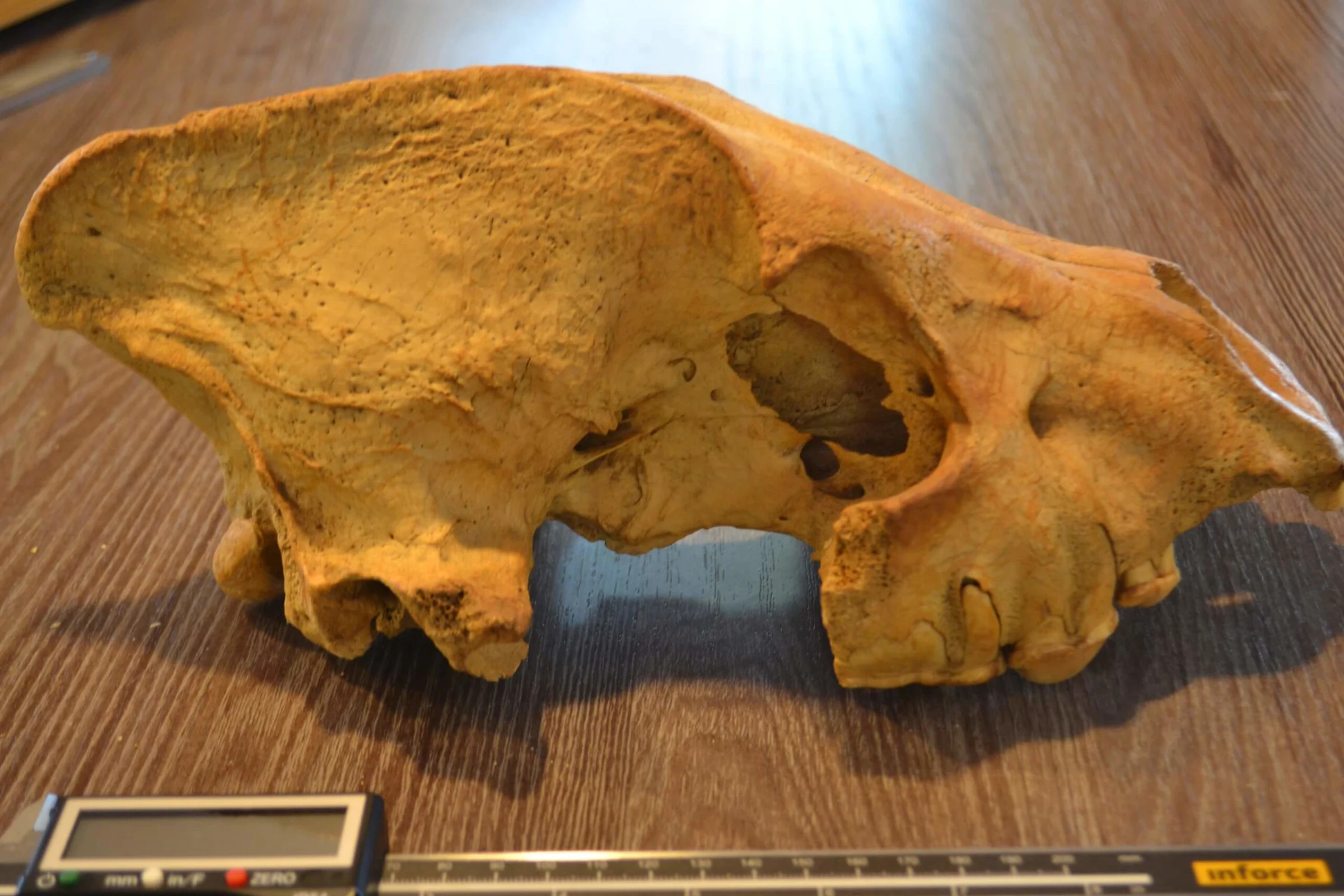![]() View of lots of broken bones and teeth surrounded by rocks inside a cave.
View of lots of broken bones and teeth surrounded by rocks inside a cave.
Mon 03 July 2023:
Locals in Siberia unearthed what palaeontologists consider to be the largest ancient hyena cave ever discovered in Asia, a prehistoric cave hyena lair. The cave in question is in Khakassia, a Russian Republic in southern Siberia, and it contained prehistoric animal and plant bones from the Pleistocene era (2.6 million to 11,700 years ago).
A translated version of the statement released by the Russian institute, V. S. Sobolev Institute of Geology and Mineralogy, said that palaeontologists also found two complete cave hyena skulls and suspect this is where they raised their cubs.
The researchers speculate that hyenas lived in the cave since the bones found had gnaw marks consistent with hyena teeth. Additionally, they also found bones of hyena pups which are also unusually intact after this long considering their fragility which indicated that they were raised inside the cave.
A cave hyena skull on a wooden desk.
“We even found a whole skull of a young (hyena), many lower jaws and milk teeth,” Dmitry Gimranov, senior researcher at the Ural Branch of the Russian Academy of Sciences, said in a statement. The palaeontologists also found multiple whole skulls of young hyenas which could help them understand how their cubs grew, what they ate, and more.
He also spoke about how there is a similar one in Russia which was excavated at the end of the Soviet era but even there they did not find “so many remains of hyenas” or complete skulls.
The researchers posted a video of the discovery (in Russian) on June 20.
“We already have two whole skulls – this is a very big rarity,” said Gimranov. He added, “In addition, we came across a series of bones in anatomical order. For example, in rhinos, the ulna and radius bones are together. This suggests that the hyenas dragged parts of the carcasses into the lair.”
The bones have been sent to Yekaterinburg for further analysis.“[T]he finds will also tell us about the flora and fauna of that time, what animals ate, what the climate was like in this area,” Dmitry Malikov, senior researcher at the Institute of Geology and Mineralogy of the Siberian Branch of the Russian Academy of Sciences, said in the statement.
“We will also get important information from the coprolites,” the fossilized feces of the animals, he added.
SOURCE: INDEPENDENT PRESS AND NEWS AGENCIES
______________________________________________________________
FOLLOW INDEPENDENT PRESS:
TWITTER (CLICK HERE)
https://twitter.com/IpIndependent
FACEBOOK (CLICK HERE)
https://web.facebook.com/ipindependent
Think your friends would be interested? Share this story!








